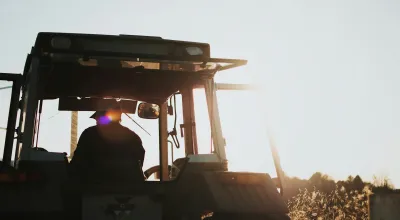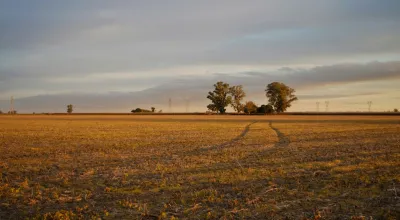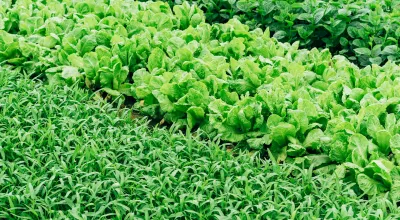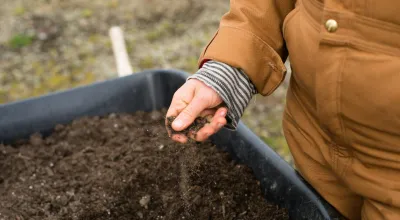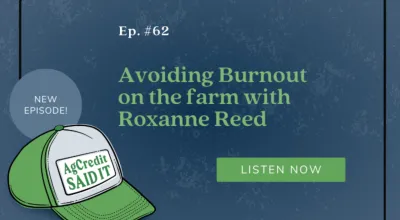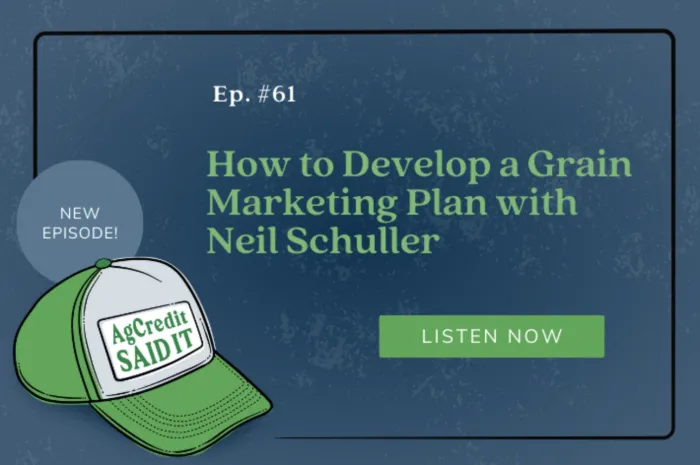
Episode 61: How to Develop a Grain Marketing Plan with Neil Schuller
Neil Schuller, gives a striking insight: about 80% of producers regard grain marketing as one of the least favorite aspects of their operations.
I think that a lot of it is a feeling of complexity,” says Schuller. “There are a lot of moving parts and producers don’t know where to start to navigate that.”
Despite the challenge it presents, Schuller asserts the necessity of developing a well-devised grain marketing plan, pointing out that “ultimately, this is your form of income and revenue.”
Fortunately, Schuller is passionate about guiding producers through the complexities of grain marketing and offers advice on how to do so.
Take a “Vacation”
Schuller approaches grain marketing much like planning a vacation.
“Most of the time, when we’re getting ready to go on vacation, we spend some time creating a plan,” relates Schuller. “What’s the destination or goal? What’s it going to cost? What stops will we make along the way?
Just like we plan our vacations to ensure an enjoyable experience, developing a grain marketing plan involves similar preparation.
“The first step,” Schuller emphasizes, “is to understand and keep your eye on what you’re trying to do. Your ultimate goal should be to continue farming next year.”
From there, Schuller says understanding your production cost is foundational. “Once we understand what it’s going to cost for you to farm in the year ahead, then we can understand where our break-even point is. And when we can understand our break-even, that allows us to understand where that profitable level is for us to enter selling into the market at.”
Next, Schuller advises focusing on significant dates and recognizing profit thresholds, referring to them as “mile markers” that should be reviewed along the way.
“Where do we start to make a profit? Those are the mile markers,” explains Schuller. “We want to maximize the profitability of our operations, manage the risk that comes along with that, and take a little bit of stress off the table in an otherwise really stressful environment of planting, nurturing and harvesting.
Other Tips
Schuller advises looking two years ahead in developing a grain marketing plan, stressing the importance of having a structured and disciplined approach.
“I like to encourage guys to really start this for the next crop year and the one beyond it, just as soon as you’re done with harvest.”
Schuller suggests writing down your plan to have a tangible reference and recommends having an “accountability partner” to provide perspective, remove emotion for decision-making, and ensure goals are met.
“Create a good framework to start with and then have the discipline to stay with it,” concludes Schuller.
For more tips on how to create a grain marketing plan and insight into the grain market outlook for the upcoming growing season, listen in your favorite podcast app.
Here’s a glance at this episode:
- [01:28] Neil introduces himself and his agriculture background.
- [02:32] Neil gives an overview of The Andersons company.
- [03:46] Neil explains how to develop a grain marketing plan with a simplified approach akin to planning a vacation.
- [12:32] Neil shares the importance of implementing structure and discipline in a grain marketing strategy.
- [17:13] When developing a grain marketing plan, Neil explains what producers need to provide, such as their cost of production and risk tolerance.
- [18:59] Neil shares what services The Andersons offers to help farmers with grain marketing, managing risk, and making informed decisions.
- [24:22] Neil highlights a few market predictions and upcoming USDA report dates.
- [26:28] Neil discusses global agricultural supply issues, including weather conditions affecting crop outputs in Argentina, Brazil, and Russia.
- [29:26] Neil describes the current agricultural market and what he anticipates for future corn, soybean, and wheat markets.
Resources mentioned in this episode:
- The Andersons Grain website - https://www.andersonsgrain.com/
- Freedom Pricing Tools - https://www.andersonsgrain.com/products-and-services/services/freedom/
- Stocks Report (releases June 28, 2024) - https://www.nass.usda.gov/Surveys/Guide_to_NASS_Surveys/Off-Farm_Grain_Stocks/index.php
- Acreage Report (releases June 28, 2024) - https://www.fsa.usda.gov/news-room/efoia/electronic-reading-room/frequently-requested-information/crop-acreage-data/index
Connect with AgCredit on Facebook, Twitter and Instagram
Share questions and topic ideas with us:
Email podcast@agcredit.net
- Transcription
Voiceover (00:08):Welcome to AgCredit Said It. In each episode, our hosts sit down with experts from all parts of the agriculture industry to bring you insights and must-have information on all things from farming to finances, and everything in between.
Matt Adams (00:28):Hey, everyone, welcome back to another episode of AgCredit Said It. I'm Matt Adams and I'll be your host. Today, we are talking with Neil Schuller from The Andersons. Neil is a manager of marketing strategy and risk solutions for The Andersons Incorporated trade and processing group. Neil has been with The Andersons for 28 years, serving in a variety of roles and leadership positions throughout his tenure. His current position, he works with The Andersons team of merchants to provide the best-in-class grain marketing strategies for risk-management solutions for producers across the company's North American footprint. An Ohio native, Schuller was born and raised on a row crop farm and joined The Andersons Incorporated, upon completing his time at the Ohio State University. He resides in Toledo, Ohio with his wife Andrea and their son AJ. Neil, welcome to the podcast. Thank you for being on with us, sir.
Neil Schuller (01:17):Well, thank you for having me. It's a pleasure being here. Looking forward to it.
Matt Adams (01:22):So, Neil, I know I already read your bio, but is there anything else you'd like to add or that you'd like our listeners to know about you?
Neil Schuller (01:28):Yeah, I think that that's a pretty complete thing and tells my story a little bit. Been with The Andersons for some time now, an interesting story in as much as I remember growing up. And at the point you sort of leave the farm, I just remember thinking, "Man, I don't know what I'm going to do with my life going forward here, but it's not going to have anything to do with the farm or agriculture." And lo and behold, almost 30 years later, it is my life and talking with farmers. So, life has a funny way of sorting things out for you. But man, I enjoy what I do and I love talking with producers and helping them out. It's been very fulfilling.
Matt Adams (02:08):And that's one of the things I think we all feel in agriculture. Whether you were born and raised on a farm and then get maybe a job off the farm, you're never too far away from the farm. There are always ties back to everything we do. Well, and just before we dive into the questions, can you give me just a little bit of background, The Andersons, very large, very complex company. Just give me just a quick background for the listeners that may not know about your company.
Neil Schuller (02:32):Yeah, absolutely. So, we are headquartered here in Maumee, Ohio, a suburb of Toledo. We have been in business since 1947, so just over 75 years. When I first started with the company, we were a northwest Ohio, Midwest regional grain company, and we are now international. So, when you look at our grain or our trade and processing group as we're known today, our footprint's really across North America, along with the trading office in Switzerland, Romania now, the UK, so it's been a really interesting journey. And if you look at our footprint today, it really spans from Idaho down to Texas, Louisiana, Upstate New York, and if you fill in the space in between all of that, that's really where we operate today along with Southern Ontario in a pretty significant way and even out into the Western Canadian prairies.
Matt Adams (03:27):Gotcha. So, truly a worldwide market that you guys cover.
Neil Schuller (03:31):We do. Very interesting dynamic. We live in a global agricultural space these days, so it's one of those things where it's really afforded us a lot of opportunity and we learn a lot through that process.
Matt Adams (03:46):Very good. So, Neil, today we're here to talk about grain marketing. This is always the topic that I would say we probably get the most requests for when we ask members and we're just talking with the general ag producers on what they want more education on. Usually, your top couple answers are grain marketing. So, hey, let's start out with the main question that I would say is on everybody's mind when we talk about grain marketing. How do you go about developing a grain marketing plan?
Neil Schuller (04:19):And this is a great topic and one that is, man, oh man, just so near and dear to my heart, and something that is really my specialty and wheelhouse here with the company. But what's very interesting and always has been to me and recent polls have even shown roughly 80%, plus or minus, of producers list and or rate grain marketing as one of the absolute least favorite of their activities to do, relative to their operation. And that's always fascinated me because this is your form of income and revenue, but it's something that most do not look forward to. And you can unpack that through conversation. I love just talking through this topic a little bit. I think that a lot of it is a feeling of complexity. There are a lot of moving parts to that. I don't really know how to navigate that. It seems like a necessary evil. Where do I start?
(05:16):So when you talk about developing a grain marketing plan, Matt, I think that that's a great place to start. And the thing that we really try to do here when we talk about this topic is to try to make a complex topic as simple to understand as we possibly can. I think that that's foundational. And ironically, I think of it oftentimes or we'll navigate it similar to creating a plan to go on vacation because a topic that everybody seems to enjoy maybe talking about a little bit more than grain marketing.
(05:50):So, we sit down and we start to think about that and it's like, okay, where are we ultimately going? What's the destination? What's it going to cost us to go on this trip, this vacation? Where are the mile markers or stops on the way as we go to vacation? And ultimately, you have a goal in vacation. Most of the time, we spend some time creating a vacation plan. Why? Because we want to make sure that we've accounted for everything in order to have a smooth, relaxing time, and maximize our visit while we're there. A grain marketing plan has a ton of similarities to that, albeit with a different medium.
(06:27):So, I set up that context to then let's maybe explore and peel the onion back on this a little bit. So, when we look at the ultimate goal and destination part of that with a grain marketing plan, I talked to guys quite a bit and I'm like, "Well, what's your goal here?" And it's like, "Oh, to make the most money I can." To do that, there's a lot of answers. And I said, "Ultimately, your goal is to farm next year, right? Otherwise, you'd have a different livelihood. You'd be doing something else if that wasn't the ultimate goal." So, I think in understanding that, that's a great first step to understand and keep your eye on what is ultimately the goal of what we're trying to do.
(07:09):From there, going down that next bullet point cost, and that's super foundational to understand specifically to cost of production. Once we understand what it costs us to push off the dock for this year of farming ahead of us, then we can understand where our break even is. And when we can understand a break even, that allows us to understand where are there profitable levels for us to enter selling into the market at. And one of probably the biggest things that I see guys get tripped up in fairly early on is A, not taking the time to really understand that cost of production and B, mistaking profitability with price. They are very different things.
(07:54):So, taking the time to do that and then really the finite detail of that. Things like interest on your operating loan or things of that nature, cost of carry for what you have sitting in that bin out there. Are you factoring those types of things in? Because some of those hidden things can really get lost. And cost of production-wise, there's a ton of resources. You can Google farm costs of production and there's no shortage of forums out there to help guide you through that process. So, understand without that, we don't have a foundation to even start that thing from there.
Matt Adams (08:34):And I think that's definitely one of the things we always strive to the members we deal with that cost of production, we got to know where's our baseline at? What's our true cost? And then like you said, I love it when my members come and say, "Hey, I'm working with a grain marketer. We're putting together a plan." That is awesome. And correct me if I'm wrong, it seems like you take the emotion out of the crop a little bit. You're putting it more as a, this is a plan that we have.
Neil Schuller (09:05):Absolutely.
Matt Adams (09:06):I'm emotionally tied to it, but I'm not going to make emotional decisions on it.
Neil Schuller (09:11):Right, you're exactly right. And the equivalent to that would be going back to that vacation example, "Hey, we're going to set out on this vacation and it's like we don't know what it's going to cost, but it doesn't really matter. Let's just go." Well, we want to at least have an idea. You know what I mean? Hey, maybe we want to go this direction versus this direction. So, that's really foundational. Getting back into this a little bit, think about next those mile markers or where are those stops along the way that we want to be cognizant of? I, personally, as you look at your grain marketing plan, I believe that that's a combination of A, those profitable values. So, understand that cost, where do we start to make a profit? So, that's mile markers.
(09:52):The other thing is dates on the calendar. I think that there are some pretty significant dates. We talk about that a lot internally that we at least want to have, on our grain marketing plan as a milepost if you will, to let us know when you get there to let's maybe take a look at things. And then, getting back to that goal, we talked about the goal of vacation and relaxing and things of that nature. Well, we want to make this great marketing plan to A, so we can maximize the profitability of our operations, manage the risk that comes along with that, which by the way, I've never met too many producers at least that are at risk of making too much money. Usually, it's to the other side of things. But another side of things is, man, to take a little bit at least of stress off the table in an otherwise really stressful environment of planting, nurturing and harvesting this crop that the producers do every year.
(10:46):So, just like a trip or vacation though, man, we got to be prepared for when we get to a spot where there's a detour, or things don't just go quite right, and we got to be ready to adapt to that as well. And additionally, you have to consider what are the unique things about your operation that might be a little bit different. So, you can't necessarily take the neighbor's word for it or your buddy's word for it because your operation has got some nuances to it, and we got to factor that in. So, how do we develop that plan? I think about just thinking about it, at least start at a 30,000 foot. What's your goal? What are your costs? Where are those mile markers along the way? And then, what do we hope to get out of sitting down and making this plan?
Matt Adams (11:31):So, Neil, when we look at developing a marketing plan, is this something that we want to look at as a short-term goal or something more long-term in our operation? I mean if we look at develop this, I mean it's one of those we're going to say, "Well, it didn't work for me in the first 12 months, so I'm getting out of this."
Neil Schuller (11:45):Sure. For us, we're always looking two years out, and that's a rolling time period. So, obviously, you have to have short, medium and longer-term goals. But as I sit here today, we're coming up on the end of May here. I think this will come out in June. Man, we've definitely got '24 right in the crosshairs here, but we should have been looking at '25 opportunities and where are those things in? And hey, as we get to this end of harvest here, which will be here before you know it, I know it doesn't seem like it right now, but we want to start keeping a weather eye on '26, is there something out there? Not out a crazy amount, but maybe that first 5%, 10%. Oftentimes there a lot of opportunity in the future.
Matt Adams (12:32):So, next question, we got our plan developed. So, Neil, give me the strategy of what I need to do. What's your advice to stick with the plan that we've developed?
Neil Schuller (12:44):Well, this one gets really interesting. Jeez, you think about diets, everybody puts that New Year's resolution out there to lose some weight and I think most of those are usually done by the end of January, something like that. But the thing that I have found is really putting structure and discipline to your plan. Those are the two words that I think of that come to mind. When we talk about structure, what do I mean by structure? It's really having a framework. And in my opinion, I'm a little bit on the old school side of things, but I think it's actually having a written plan that you can look at, that you can touch, that you can feel, not just something that's in your head because when it's written down, we can see it, touch it, we can refer back to it and face that and keep it in front of us.
(13:30):So, I think the structure of that is really important, actually putting pen to paper and having it down. And the discipline of doing it right and the discipline of sticking to the plan. I tell guys all of the time, "This is not an activity that we do this time of the year when we're in the middle of planting, stuff's breaking down. We've got to service this." The joke that I make is, "Hey, do your plan when you're of sound mind and body, right? When you're not out of your mind with a ton of other things."
Matt Adams (14:00):Definitely not with a million things going on.
Neil Schuller (14:03):Yeah, absolutely. To me, it's always you think of that first quarter time of the year, right? Maybe you got your inputs bought, you are starting to make those acreage decisions coming up. That should be the time that we're really starting to think... I like to encourage guys to really start this for the next crop year and the one beyond that, just as soon as you're done with harvest. And I understand that that gets to be an exhaustive activity because you reach that finish line on the crop, but start to really think about that year ahead and start to build this framework out. Remember, the other thing about discipline, when you made that plan, when you were of sound, mind and body, when you made that plan, it was good and it was based on information that you knew at that time.
(14:44):What I tend to see is, "Man, this is a good idea. This is where my profitability will be." And then, we get into a market that might be rallying. And all of a sudden it's like, "Oh, I know that I was going to sell here, but we're rallying and what if..." And hey, stick to the plan.
Matt Adams (15:00):A big what if.
Neil Schuller (15:01):Yeah, keep disciplined on your plan. The other thing I think is super important is to have an accountability partner or partners in all of that. Someone to keep you honest to your plan, share your plan with them. That could be a business partner, family members that are involved in your operation, could be a trusted grain merchant or grain marketing advisor, someone of that nature, your bank, somebody of that sort. But they'll help you A, see the blind spots in your plan that you might not be seeing yourself and just somebody that can take that emotion out of it and say, "Hey, we're at this profitability level here. You said you were going to do this. Where are you at?" So, those are things that I think at least help you stick to the plan structure. So, having a good framework to start with and then the discipline of staying with it.
Matt Adams (15:53):Gotcha. So, another question I get, and I say it's probably more from our younger beginning farmers and even some of our more tenured but smaller operations, they say, "I'm a smaller producer. I don't need a grain marketing plan. That doesn't really apply to me." What size does your operation need to be to benefit from a grain marketing plan?
Neil Schuller (16:15):Yeah, that's a great question and I think one that doesn't often get asked, Matt, and I'm glad that you brought it up. I mean, the short answer is there is no specific size necessary at all. I have not ever come across an operation that cannot benefit from having a good solid grain marketing plan. To comment on that a little bit further, the one thing that I do see very clearly in the operations that tend to do the best year in and year out, they do have a plan and they do follow that plan. Do they always hit the high of the market? No, but they're also profitable in what they're doing and they're staying in business year over year. So, the better-run operations or perhaps those folks that you look at and say, "Man, they just always seem to have their stuff together," I bet you there's a grain marketing plan behind that or somebody that they're working with to help them through that.
Matt Adams (17:13):Neil, when you're getting ready to sit down with somebody to develop their grain marketing plan, what are some things that you want that producer to bring to you? When he sits down with you first time, what are you looking for?
Neil Schuller (17:28):Sure. First and foremost, we've got to understand that cost of production. And I said this throughout the first quarter, going back even to your guys' conference there in the first quarter that when we look at 2020, really to this last year, we've been in this hugely bull market. You could throw a dart and make money, quite frankly, these last few years. So, guys very likely maybe had a cost of production numbers, but they hadn't dusted them off in a few years. So, really taking the time to get granular on those numbers because that's where we understand where our starting line is. So, I want to do that. I want to understand, "Hey, what are your goals here? Do you have cash flow needs? Do we need to factor that in?" Just their position. Their risk tolerance. Is this somebody who's quite conservative, a little bit more willing to take on risks? So, understanding that kind of helps us structure some of these things as well. But honestly, a lot of it just comes through really good conversation. But without that cost of production, man, I can't stress that enough and I know-
Matt Adams (18:43):That's the key right there.
Neil Schuller (18:44):Yeah, I know I have ad nauseum here so far, but it really allows us to have a good foundational starting point. It's like building your house. You start with a good solid foundation to put the pieces on top of that, and this is really where it starts for this process.
Matt Adams (18:59):Definitely. So, Neil, I know The Andersons offers some grain marketing services and programs. Can you tell our listeners more about that and how someone could get involved with your guys's programs?
Neil Schuller (19:12):Yeah, absolutely. Certainly. We absolutely do. I'm going to just say, for us, it really starts with our team of merchants. And shout out to those folks across, I think we're at 47-ish locations across the country. They are really the boots on the ground for their geography and understanding those marketplaces well. All of us get the same information. We're in an information era today, so we're reading probably some of the same wires that the listeners are reading and things of that nature. I had a guy tell me recently, a couple months back, he says, "I don't have an information problem. I get plenty of information. I get information from news wires, I get information from my tractor and my combine and all this. I have an information consolidation problem." And that's where our merchants can really come into play is taking all that information and saying, "Here's why it matters to you." And I think that a lot of guys just need a little bit of help going through that. "I understand this, but why does that matter to somebody in Northwest Ohio?" That's a pretty important thing.
(20:23):Another thing, you talked about an accountability partner earlier, so they can fill in that a little bit and say, "Hey, how are you doing on this? What are you seeing?" So, that's one piece. Our merchants, they do a great job, get ahold of those folks, for sure. Another thing is we do have a portfolio of pricing tools called Freedom, and it's something that's designed to price futures in the market to mitigate risk on a portion. We like to say 15% to 25% of your production annually. So, it's taking a piece of that production. And what it's doing is those tools are overseen by a dedicated group here at The Andersons that specifically focus 100% of their time on the futures side of the market.
(21:06):So, the analogy that I line up a lot is you're out in the field and we really need you doing that, right? That is your wheelhouse, your area of expertise is planting, nurturing and harvesting that crop. Our farmers here in the United States are the best in the world at doing that. Most of them aren't futures markets experts. And that's okay. The folks who we have who are looking at our freedom pricing tools and making those pricing decisions, that is their area of expertise and where they do spend 100% of the time.
(21:38):The other thing about our programs, it is not one size fits all. So, we have a portfolio approach where we really look to tailor a personalized strategy that fits your operational needs and goals and explain how we might use some of that to as a litmus test to the rest of your grain marketing, right? Take that 15% that you have a professional managing on your behalf and use that as a barometer for how the rest of that's going. So, give any of our location merchants a call to learn more about either Freedom or just grain markets as a whole. You can see our location list out on our website, which is www.andersonsgrain.com and yeah, they'd love to connect with anybody who's listening in on this for sure.
Matt Adams (22:22):That's excellent stuff. And we will put all those links in our description for all of our listeners.
Neil Schuller (22:28):Awesome.
Matt Adams (22:28):One thing I look at this too, with us being on the lending side and you guys on the grain market side, I still look at it as professionals in the field for that producer where we want to be professionals for the lending side of that producer, you're the professional for that grain... It's another tool in the toolbox as I call it for our producers. So, just having that tool that they can just get the most out of their operation that way. So, that's one thing that I always try and strive to any producer out there is, "Hey, find the tops in the field out there to help you... You're not on your own on this. There's a team that you can put behind you."
Neil Schuller (23:06):Man, I couldn't agree more with that. And as the old adage goes, it takes a village. And I'm a big believer that regardless of the size of your operation, it takes a village, and utilize things that are out there to help you. Most guys have somebody on the agronomy side of things that maybe it's their own agronomist that they hire, it's somebody that they deal with. Man, utilize those folks to help you on your input package. Utilize folks who are paying attention to markets to help you navigate that. The folks on the lending side, utilize the resources around you. I think at the end of the day, everybody's here to help support the farm gates, and it is certainly our livelihood to do so. We want to help you. If we're not helping you, then we're not doing what we need to be doing.
Matt Adams (23:56):Exactly right.
Neil Schuller (23:57):Absolutely. So, yeah, utilize those resources. Don't be afraid.
Matt Adams (24:01):So, now I'm going to put you on the spot, Neil. Here is the big question to wrap this episode up with. Right now, we're recording this middle of May. We're going to drop this in the middle of June. So, Northwest Ohio, at least we're in a weather-delayed planning season. Give me a market outlook for this season.
Neil Schuller (24:22):Oh, boy. Well, first of all, that is a tall task indeed and something that certainly nobody can predict the future. If we could, everybody who's listening to this would probably have had to pay something on the front side. But the things that we're really paying attention to now, really getting into four bullet points I think are pretty important for not only the Northwest Ohio producers, but producers overall. And that's some supply side concerns that are going on, demand and looking to be a little bit predictable or somewhat predictable right now. And then, obviously, where are things at with old crop, where are things at with new crop? And I think everybody's in the crosshairs of that. So, I don't want to get too far down a rabbit hole here, but if I can, Matt, I'm just going to hit a couple of points on that.
(25:08):As you outlined, corn planting pace, a bit behind. Relax Northwest Ohio guys, I bet by the time this drops, your crop is going to be in the field and things will go well. Overall, I would tell you we're about a week behind normal. It looks like we have enough wide open weather here within the month of May that we should comfortably get this crop planted. On the positive side, the moisture profile here, especially in the East, has been really good, and it is at least somewhat recharged by and large in the West part. So, we talk about some of those concerns with the Mississippi River and the dry conditions over the past couple of years. That Western profile has definitely helped as well.
(25:50):So, some things to pay attention to. As you said, this will be dropping mid-June. The next report that's going to be pretty key is coming up on June the 28th, that's the USDA's planted acreage and June 1 stocks report. Again, on June 28th, we'll be at noon Eastern Time. Pay attention to that report. Are we going to find back some of these acres that did not, got lost, quote, unquote, in the March report? Will it be in corns? Will it be in beans? Will it be in both? It feels like we will find some of that acreage back. And what does that ultimately lead to balance sheet adjustments and things of that nature?
(26:28):On the supply side of things, down in South America, that's where we're really watching right now. Argentina's got an issue with something called a leaf hopper. It's a spiroplasma, which is a lot of real scientific fancy words, but the end result of that is it's been about a 7 million metric ton loss of Argentine corn production, so we're paying attention to that. In Brazil right now, it's really a Jekyll and Hyde situation. So, in the Central and North parts of Brazil, it's real hot and dry-ish we would call it. There's been a slight decline in that Safrinha corn area. We could see their production down a little bit. It's somewhat compensated by the increases that is in Argentina, even with the leafhopper that's going on.
(27:13):But in the Southern part of Brazil, and something that's been a little bit more relevant lately is historic levels of flooding. Roughly about 2 million metric tons of soybean production have been lost to floods already, probably around 500,000 tons of corn and two-thirds of their rice production. So, how that factors in, again, in this global market with some of these things going on in Brazil that we're definitely paying attention to on the supply side.
(27:36):One that's been very recent here is Russian wheat. So, it's about two inches behind on normal and the moisture profile there, and they had freezing temperatures May 8th and 9th of this year, that's really caused us some production question marks around Russia. Why that matters is the world has really relied on cheaper Russian wheat supplies that are now creeping up into more parity. So, seeing how that goes and what that might do going forward will be something that we're watching.
(28:06):As you said, here in the United States, some delayed corn planting here in the US. And as we transition into summer, we have been in an El Nino situation here for the last couple of years. That looks to be the verbiage that the weather folks are using as a collapse into La Nina. So, not a transition into La Nina, a collapse. So, it's going to happen relatively quick in that June, July, August timeframe. That tends to bring warmer than normal Midwest temperatures. But the correlation with precipitation is not really that telling, right?
(28:42):So I think a lot of folks in the farming area think La Nina hot, dry type scenario. Not necessarily on the dry side, but temperatures should be above average. It'll probably affect that late soy a little bit more than corn, if you will. The other thing too, tying back to that vacation we talked about right at the start, a really high confidence of an active hurricane season that usually comes along with that La Nina. Demand-wise, it's been pretty good. Mexico corn purchases have been awesome. The supply losses in South America might shift some of that production back to the US. We'll want to pay attention to that.
(29:26):But as we look into this old crop scenario right now, it's really a case where it seems like a... We would describe it as a stare down between the hedge funds and the farmer. You have the producer who wants to sell that old crop supply and the hedge fund who has been quite short. They've relieved some of that short position here lately, but who needs to get rid of what first? So, that'll keep some volatility here basis in the west and east parts of the country will be affected by that as well with some of the supply shift. But as we look into this new crop, corn in 2024 firmly starts the year in a carry environment. I talked about this at the conference as well.
(30:13):As we look to that stocks use ratio in the 14.2 area. As we have bullish factors that could come with weather and things like that, it's going to carry a little bit less weight just due to the amount of supply we have right now. Is that saying that we're not going to get bullish reaction? No, it's not saying that we're not, but it's not going to be perhaps as far extended as we've seen in past years. So, expect the price action similar to the last half of 2023, and/or if you want to look back at some analog years, look at those carry markets, call it 2016 to '20, how did the market behave in those environments? I think that that's what we will look forward to, but definitely in a carry market in corn.
(30:55):And with soybeans, it looks to be transitioning toward the carry market by the fall. Volatility will remain until this US production is a little bit more known, so stay attuned to that. But soybeans have rationed demand to an extent that normal US production could lead the balance sheets oversupplied as guys look to maybe transition a little bit more into beans. Wheat's a little bit of a wild card. The world's been relying, as I said, on those Russian crops. Australia will now come squarely into the view as to what their supply situation will be amid that Russian uncertainty. I think we're still a ways off of the US or North America becoming really competitive on that global scale. But it's a little bit of a wild card here on wheat that's coming up, and we'll just have to pay attention.
(31:42):Given a normal US growing season, and tampered inflation, we would expect markets to be in that carry environment, at least here through summer, but really pay attention. There tend to be some weather things that can cause some excitement and things of that nature. But here, again, refer back to that plan. What is your plan on if we get a little bit of spike on something with weather? Are you going to be ready to execute? Sometimes these things go very, very quickly. Many times they happen in the overnight session of the market. Don't forget that the market is open overnight and many, many orders fill.
(32:18):So, definitely get a plan in order for where you're at today and what the next few months might look like in lieu of all that. And if we can help you out in any way, be sure to give us a call.
Matt Adams (32:32):Well, Neil, thank you very much for that market outlook for the upcoming growing season and in the future. So, Neil, I want to thank you so much for being with us today. We really appreciate your time and taking... I know you have a busy schedule, but just taking time out to hang with us here for a little bit today.
Neil Schuller (32:47):I tell you what, it's been a pleasure and I've really enjoyed it, Matt. Thanks for having me on. And yeah, I look forward to definitely doing this again sometime.
Matt Adams (32:54):Very good. Well, hey, I want to thank everyone for tuning in to another episode of AgCredit Said It. We have some exciting episodes coming up in the next few weeks, including barndominiums, how to avoid burnout on the farm, and more. Be sure to subscribe to AgCredit Said It and your favorite podcast app so that you never miss any episode. We'll talk to you next time.
Voiceover (33:17):Thank you for listening to AgCredit Said It. Be sure to subscribe so you never miss an episode. While you are there, leave us a review to help others find the show. Let's talk ag in between episodes. Follow us on Facebook, Twitter, and Instagram @AgCredit. For more tips and resources, visit agcredit.net.
